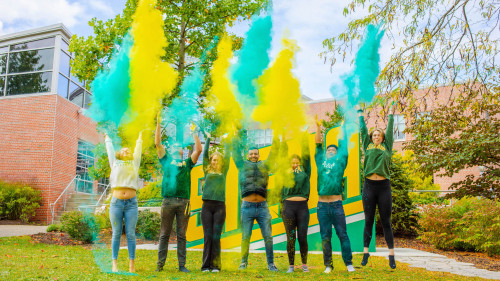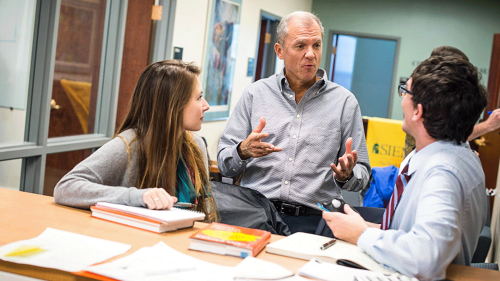
As a college student today, you will likely be employed in a job that is yet to be created.
This astonishing news from data-collecting giants, such as the U.S. Bureau of Labor Statistics and the World Economic Forum, tells us that about 40% of current jobs will be a thing of the past. Ahead lies an evolving world of work, one where those equipped with lasting, transferable skills—the exact skills honed by a liberal arts education—hold a clear advantage. Here’s why, what to consider and what to know about the liberal arts as you research colleges.
The skills are even more important in a post-pandemic world. Consider the top three skills needed in 2025: Analytical thinking, creativity and flexibility. These form the polestar of the liberal arts, along with problem solving, innovating, and connecting and communicating ideas to create meaningful societal changes.
In fact, liberal arts majors are thriving in our post-pandemic world. Read about how the pandemic has encouraged legions of students to opt for liberal arts, history, political science, social work and sociology. (All programs that are offered by Siena’s School of Liberal Arts, the largest and most diverse of the college’s three schools.)
Liberals arts grads are in demand. This surge in interest in the liberal arts comes at a time when recruiters are seeking graduates who can meet the ever-evolving demands of the knowledge economy. They recognize that whereas the technical skills of today can become quickly obsolete, broad skills not only last, they matter. In other words, today’s leaders are looking for students who are trained not only how to solve problems, but to ask which questions and problems to solve and why.
It comes as no surprise that a third of Fortune 500 CEOs have liberal arts degrees themselves. YouTube, Slack, Whole Foods, and HBO are just a few thriving enterprises led by liberal arts grads. As Apple’s Steve Jobs said, “It's technology married with liberal arts, married with the humanities, that yields us the results that make our heart sing.”
Liberal arts majors not only thrive in business, they are well-positioned for leadership and service to the state and humanity. Media tycoon Ted Turner, entrepreneur and philanthropist Oprah Winfrey, and Emmy-drenched TV host Jon Stewart all attended liberal arts colleges. In fact, research shows that liberal arts graduates land a more diverse slate of professions than most students from other disciplines.
Super-adaptive liberal arts grads hold yet another advantage: They earn more over the long haul. Yes, you read that right. A recent study by the Center on Education and the Workforce found that the 40-year median return on investment of liberal arts institutions ($918,000) is close to those of four-year engineering and technology-related schools ($917,000), and four-year business and management schools ($913,000).
If you hunger for the skills and knowledge to sustain your lifetime in a world set on fast forward, the liberal arts are for you. It’s a degree that just keeps on giving: Not only will you gain the depth of learning and habits of mind to deal with complexity, diversity, and change, you will gain the skills and knowledge to innovate and to make a difference.
Speaking of...
Siena College’s School of Liberal Arts is the largest and most diverse of our three schools. Its 11 academic departments support more than 40 majors, minors and certificate programs.
Departments include: American Studies, Creative Arts, Education, English, History, Modern Languages & Classics, Philosophy, Political Science, Psychology, Religious Studies, Social Work and Sociology.
Want to chat with a student, professor or alum to dig deeper?

